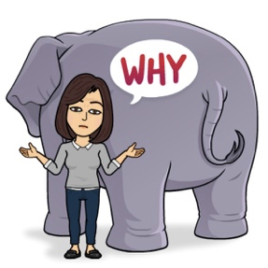Most of us who’ve been skiing, rafting, or even bicycling know this experience: you have an open path ahead of you and a single obstacle to avoid. You focus on that obstacle–maybe a tree or a rock–and tell yourself to go around it, only to find yourself running straight into it (often at full-speed). After picking yourself up, you wonder how you could have possibly hit the only tree within a hundred yards and think you’re probably not ready for outdoor activities.

Something every kayaker knows that every CEO needs to? Your boat goes where your eyes go. In other words: see the river, not the rocks
That’s not a paddling problem. That’s a mindset problem. Want to fix it?
Kayakers know a simple truth: your boat goes where your eyes go. if you focus on that single rock in the river, you’ll hit it pretty much every time. Your conscious mind might be saying “stay away from that rock!” But all your subconscious hears is, “Rock!”
On the other hand, if instead of looking at the rocks you focus on the river, you’ll find the path much easier. If your eyes head for the open water, then your attention will follow, and so will your boat. It’s a mindset issue — otherwise known as your internal narrative. And it’s the secret to success in business and in boats.
What’s true in boats is true in boardrooms. See the river, not the rocks.
Martin Seligman, in his groundbreaking research on positive psychology, found that the biggest predictor of success is not how many rocks are in your river, or even really how good you are with a paddle. The biggest predictor of success is your mindset — where your eyes go. When you focus on all the problems you’re facing and spend most of your time talking about what’s going wrong, you’ll find yourself stuck. If you focus instead on what you want to accomplish and searching for opportunities, you’ll naturally start telling a different story — and you’ll find yourself taking a much different journey.
His work, and the work of hundreds of scientists after him, has found that mindset — the story we tell ourselves — is the biggest predictor of success, for individuals and for enterprise. Are you the kind of person who focuses on obstacles, or who sees opportunities? Because the person who looks at obstacles is much more likely to run into them.
But here’s the news that really matters: research shows that just as a kayaker can learn to stop staring at the rocks and start looking at the river, so too can individuals stop staring at obstacles. We can easily be coached out of a destructive mindset into a positive one. And the start is pretty simple.
Sometimes the most effective narrative shift you can make is simply to stop talking about the rocks, and start talking about the river.



